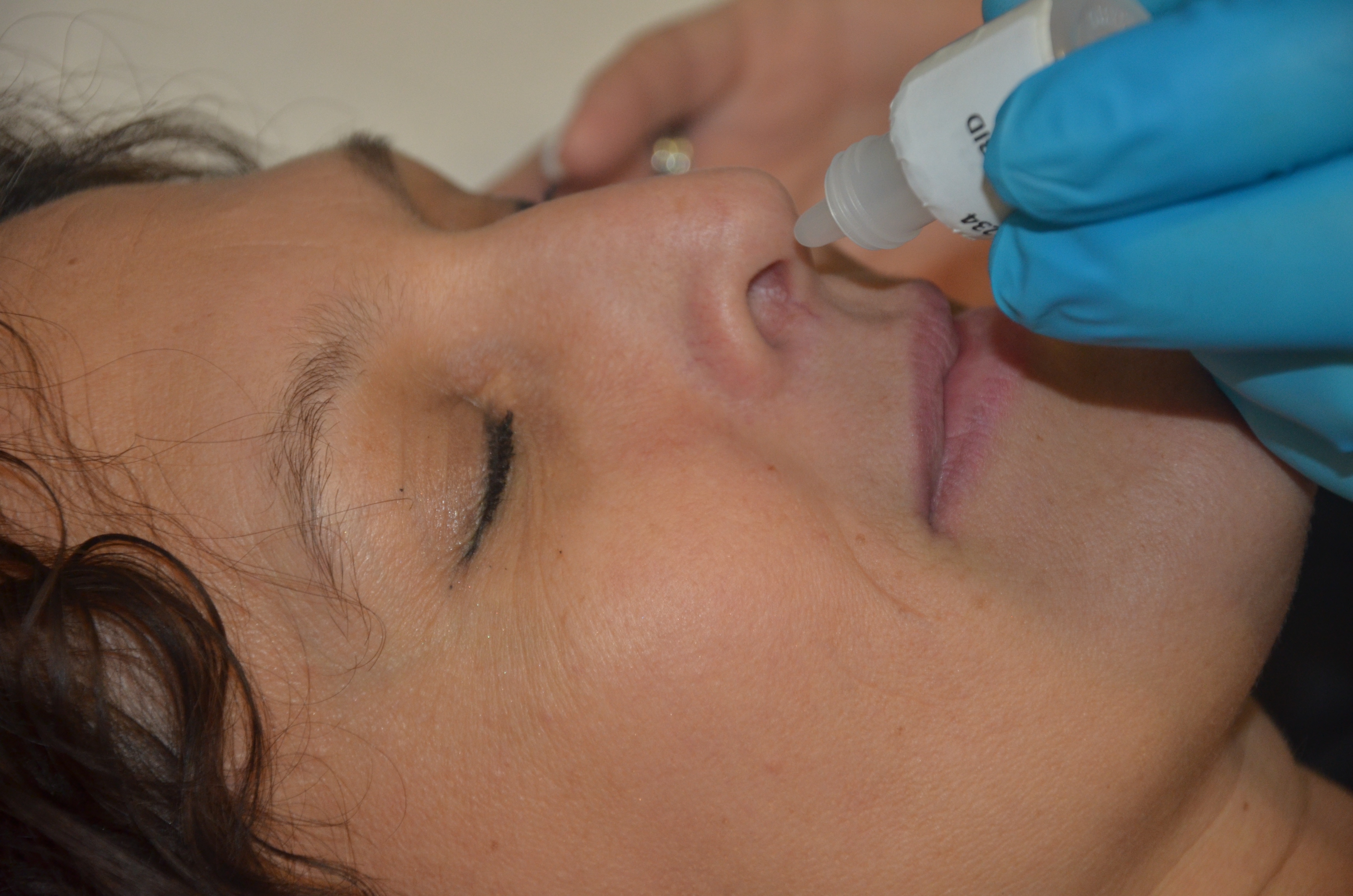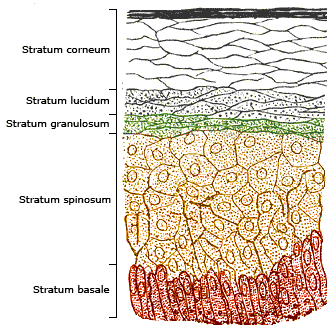|
Topical Gels
Topical gels are a Topical medication, topical drug delivery dosage form commonly used in cosmetics and treatments for skin diseases because of their advantages over cream and ointment. They are formed from a mixture of Thickening agent, gelator, solvent, active drug, and other excipients, and can be classified into organogels and Hydrogel, hydrogels. Drug formulation and preparation methods depend on the properties of the gelators, solvents, drug and excipients used. Structure of gels A gel refers to the semi- solid, 3-dimensional matrix formed from an interspersed system of colloidal particles or the permeation of a solvent into an entwined polymer chain network. Pharmaceutical gels are formed by adding a Thickening agent, gelator (gelling agent) to the solvent and active ingredient mixture. Gelators used in gel formulation can be small molecules with low molecular weight or polymers (synthetic, semi-synthetic or natural). The solvent that is used as a dispersion medium can ... [...More Info...] [...Related Items...] OR: [Wikipedia] [Google] [Baidu] |
Topical Medication
A topical medication is a medication that is applied to a particular place on or in the body. Most often topical medication means application to body surfaces such as the skin or mucous membranes to treat ailments via a large range of classes including creams, foams, gels, lotions, and ointments. Many topical medications are epicutaneous, meaning that they are applied directly to the skin. Topical medications may also be inhalational, such as asthma medications, or applied to the surface of tissues other than the skin, such as eye drops applied to the conjunctiva, or ear drops placed in the ear, or medications applied to the surface of a tooth. The word ''topical'' derives from Greek τοπικός ''topikos'', "of a place". Justification Topical drug delivery is a route of administering drugs via the skin to provide topical therapeutic effects. As skin is one of the largest and most superficial organs in the human body, pharmacists utilise it to deliver various dr ... [...More Info...] [...Related Items...] OR: [Wikipedia] [Google] [Baidu] |
Biocompatibility
Biocompatibility is related to the behavior of biomaterials in various contexts. The term refers to the ability of a material to perform with an appropriate host response in a specific situation. The ambiguity of the term reflects the ongoing development of insights into how biomaterials interact with the human body and eventually how those interactions determine the clinical success of a medical device (such as pacemaker, hip replacement or stent). Modern medical devices and prostheses are often made of more than one material so it might not always be sufficient to talk about the biocompatibility of a specific material. Since the immune response and repair functions in the body are so complicated it is not adequate to describe the biocompatibility of a single material in relation to a single cell type or tissue. Sometimes one hears of biocompatibility testing that is a large battery of in vitro test that is used in accordance with ISO 10993 (or other similar standards) to de ... [...More Info...] [...Related Items...] OR: [Wikipedia] [Google] [Baidu] |
Sweat Gland
Sweat glands, also known as sudoriferous or sudoriparous glands, , are small tubular structures of the skin that produce sweat. Sweat glands are a type of exocrine gland, which are glands that produce and secrete substances onto an epithelial surface by way of a duct. There are two main types of sweat glands that differ in their structure, function, secretory product, mechanism of excretion, anatomic distribution, and distribution across species: * Eccrine sweat glands are distributed almost all over the human body, in varying densities, with the highest density in palms and soles, then on the head, but much less on the trunk and the extremities. Its water-based secretion represents a primary form of cooling in humans. * Apocrine sweat glands are mostly limited to the axillae (armpits) and perineal area in humans. They are not significant for cooling in humans, but are the sole effective sweat glands in hoofed animals, such as the camels, donkeys, horses, and cattle. Ce ... [...More Info...] [...Related Items...] OR: [Wikipedia] [Google] [Baidu] |
Hair Follicle
The hair follicle is an organ found in mammalian skin. It resides in the dermal layer of the skin and is made up of 20 different cell types, each with distinct functions. The hair follicle regulates hair growth via a complex interaction between hormones, neuropeptides, and immune cells. This complex interaction induces the hair follicle to produce different types of hair as seen on different parts of the body. For example, terminal hairs grow on the scalp and lanugo hairs are seen covering the bodies of fetuses in the uterus and in some newborn babies. The process of hair growth occurs in distinct sequential stages. The first stage is called ''anagen'' and is the active growth phase, ''telogen'' is the resting stage, ''catagen'' is the regression of the hair follicle phase, ''exogen'' is the active shedding of hair phase and lastly ''kenogen'' is the phase between the empty hair follicle and the growth of new hair. The function of hair in humans has long been a subject ... [...More Info...] [...Related Items...] OR: [Wikipedia] [Google] [Baidu] |
Shunt (medical)
In medicine, a shunt is a hole or a small passage that moves, or allows movement of, fluid from one part of the body to another. The term may describe either congenital or acquired shunts; acquired shunts (sometimes referred to as iatrogenic shunts) may be either biological or mechanical. __TOC__ Types * Cardiac shunts may be described as right-to-left, left-to-right or bidirectional, or as systemic-to-pulmonary or pulmonary-to-systemic. * Cerebral shunt: In cases of hydrocephalus and other conditions that cause chronic increased intracranial pressure, a one-way valve is used to drain excess cerebrospinal fluid from the brain and carry it to other parts of the body. This valve usually sits outside the skull but beneath the skin, somewhere behind the ear. Cerebral shunts that drain fluid to the peritoneal cavity (located in the upper abdomen) are called ''ventriculoperitoneal'' (''VP'') shunts. * Lumbar-peritoneal shunt (a.k.a. ''lumboperitoneal'', ''LP''): In cases of chron ... [...More Info...] [...Related Items...] OR: [Wikipedia] [Google] [Baidu] |
Paracellular Transport
Paracellular transport refers to the transfer of substances across an epithelium by passing through the intercellular space ''between'' the cells. It is in contrast to transcellular transport, where the substances travel ''through'' the cell, passing through both the apical membrane and basolateral membrane. The distinction has particular significance in renal physiology and intestinal physiology. Transcellular transport often involves energy expenditure whereas paracellular transport is unmediated and passive down a concentration gradient, or by osmosis (for water) and solvent drag for solutes. Paracellular transport also has the benefit that absorption rate is matched to load because it has no transporters that can be saturated. In most mammals, intestinal absorption of nutrients is thought to be dominated by transcellular transport, e.g., glucose is primarily absorbed via the SGLT1 transporter and other glucose transporters. Paracellular absorption therefore plays only ... [...More Info...] [...Related Items...] OR: [Wikipedia] [Google] [Baidu] |
Transcellular Transport
Transcellular transport involves the transportation of solutes by a cell ''through'' a cell. Transcellular transport can occur in three different ways active transport, passive transport, and transcytosis. Active Transport Main article: Active transport Active transport is the process of moving molecules from an area of low concentrations to an area of high concentration. There are two types of active transport, primary active transport and secondary active transport. Primary active transport uses adenosine triphosphate (ATP) to move specific molecules and solutes against its concentration gradient. Examples of molecules that follow this process are potassium K+, sodium Na+, and calcium Ca2+. A place in the human body where this occurs is in the intestines with the uptake of glucose. Secondary active transport is when one solute moves down the electrochemical gradient to produce enough energy to force the transport of another solute from low concentration to high concentrat ... [...More Info...] [...Related Items...] OR: [Wikipedia] [Google] [Baidu] |
Epidermis
The epidermis is the outermost of the three layers that comprise the skin, the inner layers being the dermis and Subcutaneous tissue, hypodermis. The epidermis layer provides a barrier to infection from environmental pathogens and regulates the amount of water released from the body into the atmosphere through transepidermal water loss. The epidermis is composed of stratified squamous epithelium, multiple layers of flattened cells that overlie a base layer (stratum basale) composed of Epithelium#Cell types, columnar cells arranged perpendicularly. The layers of cells develop from stem cells in the basal layer. The human epidermis is a familiar example of epithelium, particularly a stratified squamous epithelium. The word epidermis is derived through Latin , itself and . Something related to or part of the epidermis is termed epidermal. Structure Cellular components The epidermis primarily consists of keratinocytes (cell proliferation, proliferating basal and cell differen ... [...More Info...] [...Related Items...] OR: [Wikipedia] [Google] [Baidu] |
Passive Transport
Passive transport is a type of membrane transport that does not require energy to move substances across cell membranes. Instead of using cellular energy, like active transport, passive transport relies on the second law of thermodynamics to drive the movement of substances across cell membranes. Fundamentally, substances follow Fick's first law, and move from an area of high concentration to one of low concentration because this movement increases the entropy of the overall system. The rate of passive transport depends on the permeability of the cell membrane, which, in turn, depends on the organization and characteristics of the membrane lipids and proteins. The four main kinds of passive transport are simple diffusion, facilitated diffusion, filtration, and/or osmosis. Passive transport follows Fick's first law and the second law of thermodynamics. Diffusion Diffusion is the net movement of material from an area of high concentration to an area with lower concentra ... [...More Info...] [...Related Items...] OR: [Wikipedia] [Google] [Baidu] |
Diffusion
Diffusion is the net movement of anything (for example, atoms, ions, molecules, energy) generally from a region of higher concentration to a region of lower concentration. Diffusion is driven by a gradient in Gibbs free energy or chemical potential. It is possible to diffuse "uphill" from a region of lower concentration to a region of higher concentration, like in spinodal decomposition. The concept of diffusion is widely used in many fields, including physics (particle diffusion), chemistry, biology, sociology, economics, and finance (diffusion of people, ideas, and price values). The central idea of diffusion, however, is common to all of these: a substance or collection undergoing diffusion spreads out from a point or location at which there is a higher concentration of that substance or collection. A gradient is the change in the value of a quantity, for example, concentration, pressure, or temperature with the change in another variable, usually distance. A change in c ... [...More Info...] [...Related Items...] OR: [Wikipedia] [Google] [Baidu] |
Skin
Skin is the layer of usually soft, flexible outer tissue covering the body of a vertebrate animal, with three main functions: protection, regulation, and sensation. Other cuticle, animal coverings, such as the arthropod exoskeleton, have different cellular differentiation, developmental origin, structure and chemical composition. The adjective cutaneous means "of the skin" (from Latin ''cutis'' 'skin'). In mammals, the skin is an organ (anatomy), organ of the integumentary system made up of multiple layers of ectodermal tissue (biology), tissue and guards the underlying muscles, bones, ligaments, and internal organs. Skin of a different nature exists in amphibians, reptiles, and birds. Skin (including cutaneous and subcutaneous tissues) plays crucial roles in formation, structure, and function of extraskeletal apparatus such as horns of bovids (e.g., cattle) and rhinos, cervids' antlers, giraffids' ossicones, armadillos' osteoderm, and os penis/os clitoris. All mammals have som ... [...More Info...] [...Related Items...] OR: [Wikipedia] [Google] [Baidu] |





